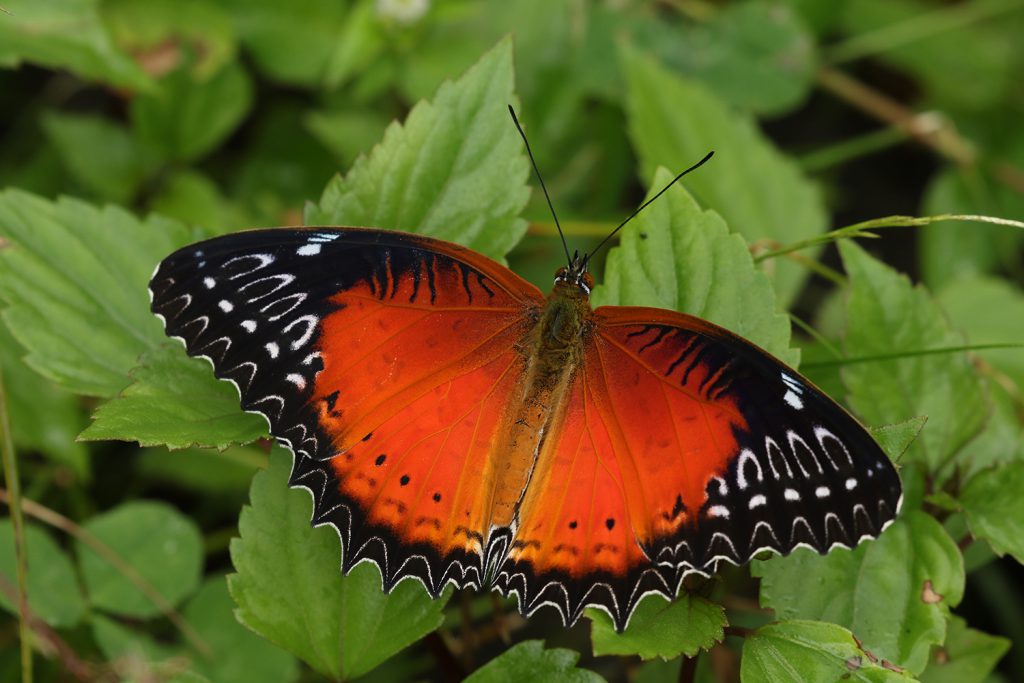The wings are scarlet with broad black margins and each forewing tip has a diagonal white patch. The butterfly, Red Lacewing (Cethosia biblis) looks playful. It is a new species that was discovered in Bumthang this year.
Like Red Lacewing, Rose Windmill and Common Peacock are abundant in southern region but now these butterflies are found in the northern part of Bhutan.
The butterflies has shifted to higher altitudes and surprisingly chosen completely different species of plants on which to lay its eggs, according to research presented at the Ugyen Wangchuk Institute for Conservation and Environment Research (UWICER).
The researcher, Karma Wangdi said the species might have had to adapt unexpectedly quickly to climate change. “I am excited to see these butterflies in this region but the sight of other butterflies began declining sharply as change in weather focus made conditions too hot and dry for its caterpillars’ food plant.”
He added thatthe butterflies did not need human help and reappeared on higher grounds in the east, where its caterpillars were feeding on a flowering plant it has never eaten before. “Several other butterfly species have been changing habitat or diet to cope with a changing climate,” he said.
Many environmentalists fear that climate change is happening too quickly for the species to adapt but, according to photographer, Tshultrm Drukpa, butterfly species are increasing in the northern part and declining in the southern region.
Till last year, UWICER recorded 753 butterflies and it has increased to 758, which means 6 new species are added to the list this year.
Karma Wangdi shared that this research showed that nature is changing, and change in diet has enabled species to survive.
“We have to give these species the space to adapt,” said Karma Wangdi. “In the early days of climate change, we were worried that the species which were already found in this region would move out when the new species moved in, but we were wrong.”
He said that more than a quarter of species are moving north, with butterflies such as the Common Peacock moving around 20-30km each year. With climate change, other southern species and insects have also started to spread rapidly into the northern region.
“With climate change, rather than heading toward extinction the butterfly has adapted to the changing climate by shifting to a higher altitudes and changing its host plant,” he added.
Meanwhile, warmer summers have allowed the butterflies to complete its life cycle by eating wild plants. Karma Wangdi said that change in diet has allowed the butterfly to rapidly expand its range but some other species are becoming threatened as they cannot move to keep pace with climate change.
Kinley Yonten from Bumthang














